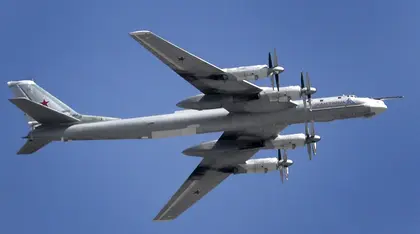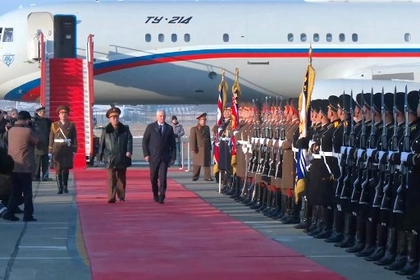Eleven strategic bombers were used to launch a missile attack on Ukraine overnight, according to General Valeri Zaluzhny, Commander-in-Chief of the Armed Force of Ukraine.
JOIN US ON TELEGRAM
Follow our coverage of the war on the @Kyivpost_official.
On the Telegram feed of the Armed Forces, Zaluzhny outlined that, starting from around 02:30 in the morning, 9 Tu-95 bombers from Russia’s far-northern Murmansk province and 2 Tu-160 bombers from the Engels Airfied undertook the attack.
The bombers released a total of 18 missiles of the Kh-101 and Kh-555 varieties at numerous targets across Ukraine.
The Armed Forces of Ukraine claimed to have destroyed 15 of the 18 missiles through its air defence systems, which now include the US-supplied Patriot surface-to-air missile system.
All those fired at Kyiv were intercepted, but the city of Pavlohrad in the Dnipropetrovsk Region was less fortunate with missiles injuring 34 people including three children.
❗️At night, the Russians attacked the city of #Pavlohrad in the #Dnipropetrovsk Region with missiles
— KyivPost (@KyivPost) May 1, 2023
25 people were injured, including 3 children. 19 high-rise buildings and 25 private houses were damaged, the head of the RMA, Serhii Lysak, reported.
📷: Telegram / Serhii Lysak pic.twitter.com/xHz9LAZQH1
The use of Tu-95s in large numbers from the Russian near-Arctic at one time to deploy long-range missiles can be seen as a variation to Russian aviation tactics during its full-scale invasion of Ukraine. Last night’s attack occurred from Ukraine’s north, east and south.
Each bomber would have fired only one or two missiles last night when the total cumulative payload of the deployed bombers can be nearly 170 missiles.
This may be a tactical decision, such as a trial strike involving the Murmansk airfield, or it may reflect diminishing Russian missile stockpiles and the need to conserve them ahead of a potential Ukrainian counteroffensive.

Finland PM Says Russia ‘Permanent’ Threat to EU
Ukraine’s Defense Minister, Oleksi Reznikov, has previously publicly estimated that the Russian Federation has less than 50% remaining of both its 144 Kh-101 missiles and its 300 Kh-555 missiles.
Tu-95s, propeller aircraft with a mission radius of more than 7000 kilometres, originally date from the 1950s. They are a key component of the Soviet Union’s/Russian Federation’s nuclear capability, and a main way that the Russian Federation would conduct a nuclear strike against an adversary.
Because of their strategic nature, Tu-95s were long not used in combat situations. Modernised Tu-95MS made their first appearance in combat in November 2016 when they launched Kh-101 non-nuclear cruise missiles on positions in Syria.
Depending on configuration and mission, the Tu-95MS can carry from 6 to 16 Kh-555 missiles.
On the other hand, the Tu-160 supersonic jet bomber originated in the late 1980s. With a mission radius of around 2000 kilometers, and with some modified to under radar, it is the platform for the use of the Kh-101. The Kh-101 is a stealthy missile designed to defeat air defense systems by flying at low, terrain-hugging altitudes to avoid radar systems. The Tu-160 can carry up to 12 missiles at a time.
Eleswhere, Russian strikes killed one person and wounded three others in the Ukrainian region of Kherson, a regional official said Monday.
You can also highlight the text and press Ctrl + Enter






